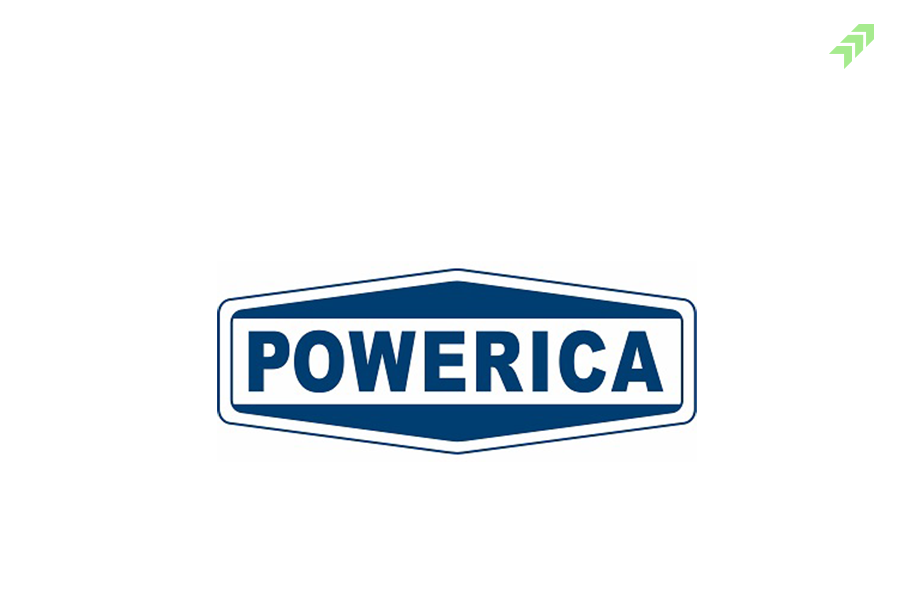Jana Small Finance Bank – About the Company
Incorporated on July 24, 2006, and registered as a non-banking finance company (“NBFC”) on March 4, 2008, Jana Small Finance Bank is the fourth largest Small Finance Bank in terms of assets under management (AUM) and the fourth largest Small Finance Bank in terms of deposit size as on Sep, 2023.
It offers loan products to individuals, and medium and small-scale enterprises under various loan schemes that include secured business loans, MSME loans,microloans against property, affordable housing loans, term loans, gold loans, and two-wheeler loans. While under unsecured loan products, it offers agricultural loans, individual and micro business loans, and group loans to women. As of March 31, 2023, the company has reported gross advances of Rs 180,007.41 million.
With an AUM of Rs 23029.56 crore, as of Sep 30, 2023, it has 771 banking outlets, including 278 outlets in unbanked rural centres, in 22 states and two union territories. And since 2008 it has served nearly 12 million customers, including 4.87 million active customers. It also works as a third-party corporate agent for general non-life insurance, life insurance products, and health insurance products.
Jana Small Finance Bank IPO Objectives
Out of the total issue size of Rs 570 crore, Rs 108 crore will be offer-for-sale (OFS) by the shareholders of the company and Rs 462 crore will fresh issue of equity shares. Hence, the bank will not receive any proceeds from the offer for sale, but the bank can utilize the net proceeds from the fresh issue.
As per the red herring prospectus, the bank proposes to utilize the Net Proceeds from the Fresh Issue towards augmenting our Bank’s Tier–1 capital base to meet the Bank’s future capital requirements, to improve its CRAR and Tier-I capital. Further, the proceeds from the Fresh Issue will also be utilized to meet the expenses related with thisoffer. One of the objectives of the bank is to receive the benefits of listing the equity shareson the Stock Exchanges in India.
Jana Small Finance Bank IPO Details:
| IPO Open Date | 07-Feb-24 | |
| IPO Close Date | 09-Feb-24 | |
| Basis of Allotment | 12-Feb-24 | |
| Listing Date | 14-Feb-24 | |
| Face Value | Rs 10 per share | |
| Price | Rs 393 to Rs 414 per share | |
| Lot Size | 36 Shares | |
| Total Issue Size | [.] shares (aggregating up to Rs 570.00 crore) |
|
| Fresh Issue | [.] Shares, aggregating up to Rs 462.00 crore | |
| Offer For Sale | [Up to 2,608,629] Shares, aggregating up to Rs 108.00 crore | |
| Issue Type | Book Built Issue IPO | |
| Listing At | BSE & NSE | |
| QIB Shares Offered | Not less than 75% of the Net Issue | |
| Retail Shares Offered | Not more than 10% of the Net Issue | |
| NII (HNI) Shares Offered | Not more than 15% of the Net Issue |
Jana Small Finance Bank IPO Issue Price & Size
The issue price of Jana Small Finance Bank IPO is between the ranges of Rs 393 per share to Rs 414 per share. The total issue size of Jana Small Finance Bank IPO is Rs 570 crore, comprising Rs 462 crore fresh equity of shares and the remaining Rs 108 crore will be offer-for-sale (OFS).
Jana Small Finance Bank IPO Launch Date
Jana Small Finance Bank IPO will be launched on 07 Feb 2024 and the last date of the IPO will end on 09 Feb 2024.This means, the investors can bid in the Jana Small Finance Bank IPO between 07 Feb 2024 to 09 Feb 2024, while the basis of allotment is 12 Feb 2024 and the listing date is expected on 14 Feb 2024.
Jana Small Finance Bank Financial Statements:
| Particulars (Rs in Million) | FY24 (6M) | FY23 (6M) | YoY | FY23 | FY22 | FY21 | CAGR |
| Interest Earned | 18639.4 | 13962.3 | 33.5% | 30750.1 | 27265.4 | 24977.3 | 11.0% |
| Interest Expended | 8763.1 | 6443.6 | 14149.9 | 13367.5 | 12345.8 | ||
| Net Interest Income | 9876.3 | 7518.6 | 31.4% | 16600.2 | 13897.8 | 12631.5 | 14.6% |
| Net Interest Margin (%) | 7.78% | 7.47% | 4.1% | 7.73% | 7.32% | 8.36% | -3.8% |
| Other Income | 3516.3 | 2933.9 | 6248.7 | 3358.3 | 2230.1 | ||
| Operating Income | 13392.6 | 10452.5 | 28.1% | 22848.9 | 17256.1 | 14861.6 | 24.0% |
| Operating Expenses | 7831.6 | 6106.0 | 12845.1 | 11388.2 | 10473.1 | ||
| Operating Profit | 5561.0 | 4346.5 | 10003.7 | 5867.9 | 4388.5 | 51.0% | |
| Provisions and contingencies | 3428.8 | 3790.2 | 7444.0 | 5693.2 | 3665.9 | ||
| Net Profit | 2132.2 | 556.3 | 283.3% | 2559.7 | 174.7 | 722.6 | 88.2% |
| EPS Basic (Rs) | 33.3 | 10.5 | 47.5 | 3.4 | 14.3 | ||
| EPS Diluted (Rs) | 29.5 | 9.8 | 201.7% | 42.6 | 3.2 | 13.5 | 78.0% |
Source: RHP
| Key Ratios | FY24 (6M) | FY23 (6M) | FY23 | FY22 | FY21 | |
| CASA Ratio | 20.49% | 22.78% | 20.21% | 22.52% | 16.29% | |
| Gross NPA Ratio | 2.44% | 6.83% | 3.94% | 5.71% | 7.25% | |
| Net NPA Ratio | 0.87% | 4.60% | 2.64% | 3.95% | 5.33% | |
| Return on Equity | 19.60% | 8.00% | 16.78% | 1.53% | 6.51% | |
| Return on Assets | 1.61% | 0.52% | 1.13% | 0.09% | 0.45% | |
| Provision Coverage Ratio (%) | 64.92% | 34.14% | 34.01% | 32.19% | 27.89% | |
| Gross Secured Advances (%) | 57.42% | 55.36% | 55.02% | 53.03% | 42.87% | |
| Yield on Advances (%) | 17.50% | 17.81% | 18.09% | 19.84% | 21.81% | |
| Credit Cost Ratio (%) | 3.53% | 5.47% | 4.95% | 4.70% | 3.51% | |
| Cost to Income Ratio (%) | 58.48% | 58.42% | 70.47% | 66.00% | 56.22% |
Source: RHP
Jana Small Finance Bank Financial Performance
In the first six months of FY24, the income from the interest of the Jana Small Finance Bank stood at Rs 1863.94 crore which grew 33.5% from the same half-yearly of FY23. The Net Interest Income of the bank in the first half of FY24 stood at Rs 987.63 crore which has also grown at 31.4% from the first six months of FY23. The Net profit of the bank for the first six months of FY24was Rs 213.2 crore which has jumped 283% from Rs 55.6 crore in the corresponding half-year of FY23. The Net Interest margin of the bank in the first half of FY24 was at 7.8% that has slightly up from 7.47% in the same period of FY23.
The income from the interest of the Jana Small Finance Bank has grown at a CAGR of 11% from Rs 2497.73 crore in FY21 to Rs 3075 crore in FY23. However, despite themarginal decrease in net interest margins, the Net Interest Income of the bank grew at a CAGR of 14.6% during the same period.
The operating income of the Jana Small Finance Bank has grown at a CAGR of 24% from Rs 1486.16 crore in FY21 to Rs 1339.26 crore in FY23. The operating profit of the bank grew at a CAGR of 51% during the same period from Rs 438.85 crore in FY21 to Rs 556.1 crore in FY23.
At the bottom line, the Net Profit of the Jana Small Finance Bank has exceptionally grown at a CAGR of 88.2% for the same period. The net Interest Margin of the Jana Small Finance Bank was 7.78% in FY23, which has marginally come down from 8.36% in FY21.
However, the asset quality of Jana Small Finance Bank has improved both Gross Non-Performing Assets (GNPA) and Net Non-Performing Assets (NNPA). In FY21 the GNPA Ratio was 7.25% in FY21 has come down to 3.94% in FY23 and 2.44% in the first half of FY24. However, the NNPA has also improved much better and decreased from 5.33% in FY21 to 2.64% in FY23 and at 0.87% in the first six months of FY24. The CASA Ratio of the bank was 16.29% in FY21 and increased to 20.21% in FY23.
Jana Small Finance Bank IPO Promoters & Shareholding of the Company
As per the DRHP and RHP, Jana Holdings Limited and TPG Asia VI SF Pte Ltd are the major shareholders of the company having 25.23% and 9.14% stakes respectively in the company. Other major shareholders are Amansa Holdings Pte Ltd, Hero Enterprise Partner Ventures and Hero Enterprise Partner Ventures holding 6.83%, 4.85% and 4.44% stakes respectively. For other shareholders’ details see the table below.
| S.No. | Name of the Shareholder | Number of Equity Shares Held | % of the pre-Offer Equity Share capital |
| 1 | Jana Holdings Limited | 2,35,75,790 | 25.23% |
| 2 | TPG Asia VI SF Pte. Ltd | 85,39,897 | 9.14% |
| 3 | Amansa Holdings Pte. Ltd | 63,79,988 | 6.83% |
| 4 | Hero Enterprise Partner Ventures | 45,27,856 | 4.85% |
| 5 | North Haven Private Equity Asia Platinum Pte. Ltd | 41,47,427 | 4.44% |
| 6 | Volrado Venture Partners Fund III-Beta | 31,02,514 | 3.32% |
| 7 | Bharti (Satya) Trustees Private Limited | 28,89,023 | 3.09% |
| 8 | Harbourvest Partners Co-Investment Fund IV L.P | 25,04,249 | 2.68% |
| 9 | Tree line Asia Master Fund (Singapore) Pte. Ltd. | 20,98,415 | 2.25% |
| 10 | QRG Investments and Holdings Limited | 20,87,427 | 2.23% |
| 11 | Barclays Wealth Trustees India Pvt Ltd | 18,15,301 | 1.94% |
| 12 | Client Rosehill Limited | 18,12,554 | 1.94% |
| 13 | Anchorage Capital Scheme I | 16,60,000 | 1.78% |
| 14 | ICICI Prudential Life Insurance Company Ltd | 16,41,345 | 1.76% |
| 15 | Puran Associates Private Limited | 14,44,511 | 1.55% |
| 16 | Singularity Growth opportunities fund I | 12,99,999 | 1.39% |
| 17 | Bajaj Allianz Life Insurance Company Ltd | 12,04,586 | 1.29% |
| 18 | OHM Investment Corporation (Viral Amal Parikh) | 11,75,000 | 1.26% |
| 19 | Ananta Capital Ventures Fund 1 | 15,17,927 | 1.62% |
| 20 | AshishKacholia | 9,70,000 | 1.04% |
| 21 | Bengal Finance & Investment Pvt. Ltd | 9,70,000 | 1.04% |
| 22 | CVCI GP II Employee Rosehill Limited | 9,29,656 | 1.00% |
| Total | 7,62,93,465 | 81.67% |
Source: RHP
Why Invest in Jana Small Finance Bank IPO?
Over the past few years, all the small finance banks in India have grown well with supporting schemes from the central government and high demand from customers looking for low-cost small-amount loans to meet their business requirements and short-term funding needs.
Also Read: What to Check Before Buying IPO: Things to Know & Is it Safe
However, while investing in any company either is launching the IPO or already listed on the stock, you need to check various factors that can affect the revenue growth and performance of the company. Here technical analysis is not possible, as stock is not listed, but you can perform the fundamental analysis that will help you know the strengths and weaknesses of the company. In respect of the same, we brought here the competitive strength and risk factors associated with theJana Small Finance Bank.
Also Read: What are the Risk Factors Involved in Applying for an IPO
Competitive Strengths:
- Owing to the central government’s initiative of financial inclusion the small finance bank (SFB) is getting better opportunities for lending to small and medium sectors of the society. Amid the scope and growth of opportunity for the SFB, the Jana Small Finance Bank is also benefiting from the credit growth especially from low-income segment small borrowers with better profitability margins.
- Jana Small Finance Bank is a digitalised bank and the majority of its services are available in digital form to customers supported by integrated multi-channel operations. Its new products are designed with application programming interface (API) technology to increase operating efficiencies and deliver better quality services, allowing it to integrate with the larger ecosystem leveraging on the API framework.
- To minimize the risk from the various factors, the company has adopted an integrated risk management approach to identify, measure, assess, and manage the key risks. It has placed detailed risk management policies and a governance structure for each type of key risk, including credit, operations, liquidity, interest rate, market, cyber and information security, and reputational risks.
- The bank hasmore than 16 years of experience in serving underbanked and underserved customers and most of its asset products are catered for such customers and the MSME segment. It offersbanking services at the customers’ doorsteps in urban and rural geographies, thereby driving financial inclusion for the underbanked and underserved customer segment.
- As per the RHP as of September 30, 2023, it has 771 banking outlets, including 278 banking outlets in unbanked rural centres, in 22 states and two union territories. With this widespread pan-India presence, it hasserved nearly 12 million customers since 2008, including 4.87 million active customers as of September 30, 2023, enabling it to reduce the concentration risk.
- To diversify its business exposure, the bank offers a diverse range of deposit products to appeal to different segments of the customer base. The deposit products comprise current accounts, savings accounts, recurring deposits and term deposits. It offers a variety of term deposits with multiple interest payment options, along with competitive interest rates.
- The bank has a demonstrated ability to scale up our liability business significantly which is visible through its deposits that have increased from zero in 2018, to Rs 189,367.24 million as of Sept 30, 2023. The gross advances have increased to Rs 180,007.41 million as of March 31, 2023, representing a CAGR of 23.31%, and increased to ₹213,471.30 million as of Sep 30, 2023.
- As part of its growth strategy, it is more focused on accelerating the secured loans that include affordable housing loans, secured business loans, gold loans, MSME loans, and two-wheeler loans book with the motive to meet the customer’s needs and diversify the lending book.
- The bank is focused on unsecured loan business to increase end-use-based loan products, such as dairy loans, loans for home improvement, unsecured loans for business purposes and debt consolidation, by cross-selling to existing banked and newly banked customers with a proven credit record located in semi-urban and rural geographies.
- To reduce the risk of inconsistent credit standards in a decentralised credit decision set-up, it has set up a centralised credit underwriting unit responsible for approving secured loans up to ₹2.50 million. It has planned to improve the risk profile by enhancing the overall control environment in the gold loan business, mitigating risks of default from group loans and continuing to enhance secured digitalization. As part of this strategy, we also launched a supply chain financing business in Fiscal 2021
- The bank has also shifted its primary focus from unsecured loans to secured loans and plans to continue to cross-sell secured loans, such as two-wheeler loans, gold loans, house repair loans and affordable housing loans, to existing unsecured customers. For the secured business, it has developed a loan lifecycle-based risk rating model that is used for risk-based re-pricing, loan review frequency, early warning signals, retention and cross-selling opportunities.
- Apart from that, as a part of strategies for increasing its retail deposit, it is increasing the product and service offerings to non-resident Indians (“NRIs”), continuing digital onboarding for entities and growing the corporate salarybusiness.
- And bank has also planned to improve its competitive position, offer the products and services to a broader range of customers, utilize the technological and digital advantages of fintechs and expand its reach through establishing alliances and partnerships with third parties.
- It has planned to focus on cross-selling key loan and insurance products to existing customers who have shown good repayment behaviour and continued focus on digitized operations.
- The company is operated and managed by highly skilled industry veterans like Ajay Kanwal (MD & CEO), who has more than 33 years of experience in financial services. Its Key Managerial Personnel and Senior Management Personnel (combined) have an average of 27 years working in financial services organizations and collectively have extensive experience in banking, credit evaluation, risk management, collections, operations, treasury and technology.
- At the financial end, it has also shown significant growth in the income from net interest and net profit. Its Net Interest Income between FY21 to FY23 grew at a CAGR of 14.6%, while the operating income and net profit of the bank for the same period grew by 24% and 88% respectively. Its Net NPA has also improved well from 5.33% in FY21 to 0.87% in FY23.
Also Read: Types of Risks Associated with Investing in the Stock Market
Risk Factors:
- The banking sector in India is highly regulated sectors that need to follow the strict norms and guidelines instructed by the RBI to provide transparent and highly secured baking and financial services to customers. Hence, operating with such strict rules and regulations becomes a challenging factor for the NBFCs or small finance banks (SFBs) to expand their business as per their feasibility of growth.
- Not only in the banking sector in the small finance banks (SFBs) segment too there is too much competition. According to the RBI’s Annual Report 2022-23, there are 140 commercial banks including 43 regional rural banks (RRBs), 2 local area banks (LABs), 6 payment banks (PBs), 1,887 cooperative banks –the latter consisting of 33 state cooperative banks, 352 district central cooperative banks and 1,502 urban cooperative banks (UCBs) and 12 small finance banks (SFBs) are operating in a different part of the country.
- The unexpected, COVID-19-like crisis has reiterated the underlying risks of the business models of most SFBs –’ high touch’ operations, personalised doorstep services, including centre meetings, driven predominantly by cash collection processes for the microfinance segment of customers. Hence, these kinds of unfavourable economic conditions are challenging for the SFBs.
- As per the RBI rules, all the SFBs need to extend 75.0% of Adjusted Net Bank Credit (ANBC) to sectors eligible for classification as priority sector lending (PSL). That is not applicable to
- Apart from that, SFBs have to maintain at least 25.0% of their banking outlets in unbanked rural areasand at least 50.0% of their loan portfolio must comprise loans and advances of up to Rs. 2.5 million, while such regulations are not imposed on NBFCs.
- Compared to NBFCs another challenging factor for SFBs is to maintain the minimum Capital Adequacy Ratio (CAR) of 15.0% of its risk-weighted assets (RWA) and maintain a minimum of 3.5% of CRR and 18% of SLR, while on the other hand, NBFCs do not have to maintain any CRR and SLR.
- A high liquidity ratio indicates that a bank holds a low amount of liquid assets, which affects its ability to pay its debt obligations and short-term liabilities. If the bank is unable to decrease its liquidity ratio, it could have an adverse effect on the business operations of the bank.
- Banks have made new loans to microfinance loan borrowers who had NPAs (“Microfinance NPA Borrowers”), with earlier NPAs being netted off with the proceeds of new loans, which poses a risk of further deteriorating asset quality and increasing credit risk.
Jana Small Finance Bank IPO Grey Market Premium (GMP)
Grey Market Premium or GMP is that premium price over the issue price, that a speculator or investor is ready to pay for an IPO-bounded company likely to list on the bourse. GMP is determined in the grey market as per the demand and supply of the shares in the grey market.
Also Read: What is Grey Market Premium in IPO: How is GMP Calculated & Reliable
The GMP is an unofficial ecosystem that keeps fluctuating in the grey market, hence it should be not considered as an individual factor while determining the share price of a company. As there are various factors, that affect the stock market in India or the stock price of the individual companies. However, you can use the GMP, as a speculative price, at which the stock price might be listed on the exchange.
Also Read: What are the Top Factors Affecting the Stock Market in India
As per the sources, the GMP of Jana Small Finance Bank IPO is trading at around Rs 108 in the grey market shows the share of Jana Small Finance Bank is expected to list at around Rs 522if you consider the upper price band of Rs 414 announced in the IPO for the bidding.
Jana Small Finance Bank IPO Review & Analysis
The earnings per share (EPS) of the Jana Small Finance Bank for FY23 was Rs 42.6 per share, and while considering the upper band issue price of Jana Small Finance Bank IPO of Rs 311 per share and EPS of FY23 of Rs 42.6 per share the, the share Jana Small Finance Bank is available atP/E of 9.7x.
While the EPS as per the latest financial report by the bank for the last six months of FY24 stood at Rs 29.50 per share andif you consider the same EPS for the next half year of FY24, and annualized this EPS for the full year FY24E, it would be at Rs 59. Now considering this EPS and upper band issue price of Jana Small Finance Bank IPO of Rs 311 per share, the share price is available at P/E of 7x.
However, its nearest listed peers like Au Small Finance Bank Ltd, Bandhan Bank Ltd, Ujjivan Financial Services Ltd, Equitas Small Finance Bank Limited and Utkarsh Small Finance Bank Limited are trading at 36x, 17x, 10x, 24x and 14x respectively showing that Jana Small Finance Bank IPOis fairly priced and available at a lower price compared to its listed peers. Hence you can subscribe for the Jana Small Finance Bank IPOIPO with the medium to long-term investment point of view.
Also Read: Benefits of Investing in the Stock Market: Advantages of Share Market
How to Apply for Jana Small Finance Bank IPO?
To apply in the Jana Small Finance Bank IPO just open a trading account and demat account with Moneysukh and follow the steps given below. However, by opening both these accounts with Moneysukh you will have the benefits of trading and investing in the stocks, commodities and currency.
Also Read: What to Know Before Investing in Stocks: 10 Things to Consider
At Moneysukh you will get the advantages of the best online trading app with the best features demat account at the lowest broking charges in India. Here you can also choose to trade in Algo-trading with the latest software algorithms like TradeTron, AlgoBulls,Quantman,Keev, Trade Radar, and FoxTrader all of are integrated with the most advanced charting systems TradingView to give you world-class trading and investing experience with updated market information and live feeds of the market data.
Also Read: How to Choose the Best Trading Platform in India: Points to Check
Steps to Apply for Jana Small Finance Bank IPO:
Step 1: To apply for Jana Small Finance Bank IPO use your PC or smartphone.
Step 2: Now browse to trade.moneysukh.com and log in with your User ID & password.
Step 3: Here just go to the IPO section and select the Jana Small Finance Bank IPO.
Step 4: Now you need to fill in the various details like price, quantity, and so on.
Note: Always keep in mind that while bidding at the cutoff price and then submit your application.
Step 5 : Here before submitting your IPO application successfully you have to make the payment.
Also Read: Choosing the right broker: Decoding the mystery of lowest brokerage charges
How to Check Jana Small Finance Bank IPO Allotment Status?
To check the Jana Small Finance Bank IPO allotment status you need PAN and IPO application details but that would be possible only after 12 Feb 2024 which is the basis of the allotment date. And after 13 Feb 2024, investors will start getting refunds if they don’t get the allotment of shares. You can use various online reliable sources like BSE, and NSE including Moneysukh to check the allotment status.
Also Read: How to check IPO allotment status on NSE, BSE through Moneysukh
The allotment of shares in the IPO is not possible for every individual, especially when the IPO is oversubscribed. If you have applied through either the retail category or HNI category, and both these categories are oversubscribed many times, then your chances of getting the allotment are very low.
If you don’t get the allotment of shares in the IPO, your money will refunded to your bank account after 13 Feb 2024 and if you get the allotment of any share, then the allocated shares will be transferred into your demat account on 13 Feb 2024 of on the date of listing date i.e. 14 Feb 2024. However, you can increase your chances of getting the allotment in IPOs, if you follow tips and tricks while applying.
Also Read: How to improve Allotment chances: 15 Tips for investing in IPO


















No comment yet, add your voice below!